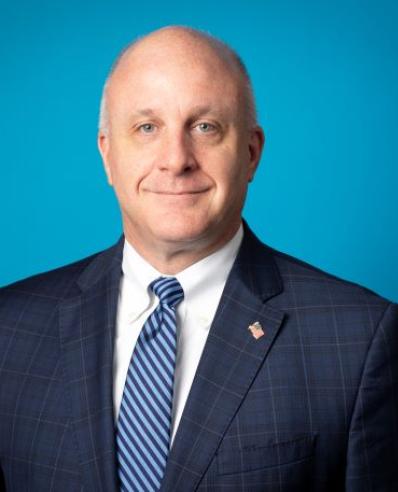To many market observers, 2020 will go down as the year of COVID-19. But to investment managers, especially those involved with initial public offerings (IPOs), this year may well be remembered for the rise of special purpose acquisition companies (SPACs). While traditional IPOs by and large have hit the pause button, so far in 2020, SPACs are having a banner year. As of late May, SPACs represented 38% of U.S. IPO filings with a net intake of $6.5 billion, exceeding the total investments of conventional IPOs, according to PitchBook Data, Inc.
Unlike true IPOs, SPACs are so-called “shell” companies created for the sole purpose of ultimately acquiring an unspecified target company. For investors, SPACs represent a low-risk entry to major initial offerings, and for sponsors, a SPAC IPO is a relatively simple way of raising public equity and funding future merger or acquisition (M&A) activity. With a straightforward balance sheet (primarily, the funds raised by the IPO plus a modest amount of working capital) as well as an absence of historical financial results, limited management discussion on operations and minimal business risk factors, the IPO process from prospectus to regulatory approval can be done as quickly as eight weeks. Further, the SPAC structure is quite attractive to investors as the SPACs are “selling” primarily on the reputation and historical investment successes of the fund managers of the SPAC.
A highlight of the low risk to entry is that, generally, shareholders vote on whether to accept an acquisition, and individual investors have the right to reject the proposed business acquisition and can redeem their shares for full value. Additionally, if the SPAC cannot find a target company in an agreed-upon and allotted time frame, generally 18-24 months, the SPAC vehicle is liquidated, and all funds are returned to shareholders.
Rising Popularity
Although the current bear market has been challenging for most traditional IPOs, the lower and, in many cases, volatile valuations of most private companies have increased the inventory of potential acquisition targets for SPACs. It’s a win-win scenario, where companies that may not otherwise go public in the current market are afforded an opportunity to do so, while the SPAC might be able to make a bargain deal. As of this writing, there are some 85 active SPACs, and such is their popularity that recently, for the first time, a SPAC raised $1 billion through its IPO.
Even industry giants are getting into the game. The Carlyle Group and Goldman Sachs, among others, have sponsored SPAC IPOs, and innovative firms such as Virgin Galactic and DraftKings have gone public through traditional SPAC structures or reverse mergers. Typically for both SPACs and reverse mergers, the management and operations of the private company remain intact after the acquisition, and in most cases become the leadership team of the newly public entity.
So, What’s the Catch?
If SPACs sound like a great way to raise capital for the purpose of making smart, targeted acquisitions in a bear market, they are. They provide a way of mitigating the game-breaking elements of poor valuations and bad timing that discourage most traditional IPOs in the current, volatile environment. But as with all things that sound almost too good, there is a catch. Once an operating entity is acquired and folded into the SPAC, the Securities and Exchange Commission (SEC) generally does not grant the typical grace periods for many areas of regulatory compliance – waiver periods that are enjoyed by public companies created through traditional IPOs. In other words, from day one, the new company must satisfy a wide range of SEC requirements. The reason for this is that the acquired operating entity in most cases assumes the regulatory profile of the already public SPAC. Two important examples to highlight: 1) the SPAC is not afforded the one-year annual grace period for internal control compliance integration for the acquired entity, and 2) the acquired entity becomes the SEC reporting entity and must follow the rigid filing timelines as set forth by the SEC, with no delay in compliance afforded.
To understand the difficulty of this challenge, consider that companies often need 18-24 months to prepare for the transition from a private firm to a public one. The lengthy period is required because the transformation involves developing or revamping of enterprisewide functions and processes that go far beyond the experience of many private organizations. Failure to achieve this transformation can lead to regulatory difficulties, bad press, lower market value and even unpleasant and distracting shareholder action. Consider all these requirements, workload and timelines, and the fact that compliance begins on Day One for the acquired entity can be daunting.
Challenges for the “New” SEC Registrant
- Visible M&A process: Once the SPAC is public, the targeting process of an acquisition candidate becomes transparent, with its progress (or lack thereof) reported in SEC filings. Challenges in M&A execution and other significant details of the acquiree become public record once filed.
- Diligence and integration are key: Timely and focused due diligence is critical. Economic and finance processes; IT; corporate governance and internal controls; legal and organizational areas should all be evaluated. While traditional integration focuses on functions consolidation, organizational alignment and synergies, the challenges here hinge on getting the acquired entity executing like a seasoned SEC filer in real time.
- Financial reporting considerations: The quantity and complexity of financial reporting rules have increased dramatically during the past decade. The ultimate risk of financial reporting problems can be severe. Consequently, assessing and addressing the financial reporting risk profile of an organization to be acquired is of crucial importance for SEC filers. Given the general lack of SEC relief in this area for SPACs, timely compliance in required.
- Legal and regulatory considerations: The Sarbanes-Oxley (SOX) Act of 2002 created sweeping auditing and financial requirements for public companies. First-time SOX readiness typically takes four to six quarters of effort, depending on the size and complexity of the organization. Again, the lack of a SOX grace period, and a potential mid- or late-in-the-year acquisition date can and likely will make this effort quite challenging.
- Governance considerations: SEC rules set specific requirements for the makeup of the board of directors. Among other things, they also require an effective internal control function, a transparent investor relations function, and a commitment to identifying related process improvement opportunities.
- Scalable IT: SinceIT is one of the major engines driving a company forward, part of the public company transformation effort should be to forecast IT needs up to 24 months beyond the acquisition. Also, companies should be prepared to ensure their IT infrastructure has the appropriate governance rigor.
- Risk management considerations: For companies transitioning into the public domain, risk management includes a wide range of subject areas, such as directors and officer’s liability insurance, required board committees, executive compensation and auditor independence.
- Based on our experience, we have found that the public company transformation can be very taxing for an organization that uses the same internal resources to drive the transition while running the company. Timetables help immeasurably, and so does breaking down the process into basic phases, such as planning, design, execution and monitoring. Protiviti’s Guide to Public Company Transformation: Frequently Asked Questions contains an example of such timetable and a comprehensive set of answers to the most common questions related to the challenging areas above, applicable to all companies transitioning from private to public – but with a heightened sense of urgency for SPACs and their acquired entities.
In this unusual time, SPACs can be an excellent way of raising capital and investing in M&A in a turbulent market. But readiness is everything, and for the SPAC, public readiness initiatives need to happen as soon as the target is identified. Flipping that focus, companies hoping to become SPAC targets need to be ready now, not begin to think about readiness when they receive the first call from SPAC leadership. Preparation – both to acquire and to be acquired – will go a long way to ensure the success of the transaction.






